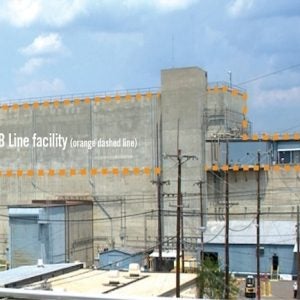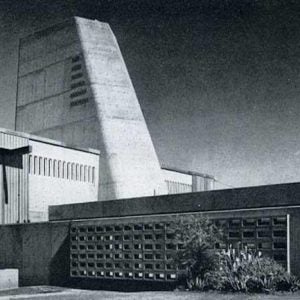 Argentina’s CAREM-25 small modular reactor (SMR) prototype has achieved a new milestone in the development its steam generators (SGs), according to Combustibles Nucleares Argentinos (CONUAR). Each of the CAREM-25 SGs consists of helical tubes grouped in six layers. CONUAR will oversee the qualification and development of the turns and welds for the manufacture of the first mockup, the production of which will start this year. More than 700 tubes, each 35m long, have been delivered to the site, CONUAR announced on 4 May.
Argentina’s CAREM-25 small modular reactor (SMR) prototype has achieved a new milestone in the development its steam generators (SGs), according to Combustibles Nucleares Argentinos (CONUAR). Each of the CAREM-25 SGs consists of helical tubes grouped in six layers. CONUAR will oversee the qualification and development of the turns and welds for the manufacture of the first mockup, the production of which will start this year. More than 700 tubes, each 35m long, have been delivered to the site, CONUAR announced on 4 May.
The CAREM (Central ARgentina de Elementos Modulares) prototype is being built on the site of a former heavy water research facility adjacent to the Atucha nuclear plant, 110km from Buenos Aires. First concrete was poured in 2014, and the reactor is now scheduled for completion in 2020. CAREM will produce approximately 25MWe of net electrical power from an indigenously produced pressurised water reactor core that will provide approximately 100MWt of thermal energy. It uses natural circulation in its primary coolant system. Temperature, density variation and gravity drive the flow of water through the nuclear heat source and the SGs. If the system loses power, coolant flow through the reactor continues without interruption. However, the maximum amount of heat that can safely be transferred from the core to the SGs using this system is lower than if the coolant were pumped through the reactor.
CONUAR said it had developed the tubes jointly with the National Atomic Energy Commission (CNEA), mainly through the Department of Mechanical Engineering, Materials and Non Destructive Testing of the CAREM Area Management, and Fábrica de Aleaciones Especiales (FAE), which was in charge of the equipment's production. To manufacture the pipes, the world's longest vacuum furnace for stress relief thermal treatment has been built and commissioned. The Alloy 690 tubes satisfy EPRI (Electric Power Research Institute) guidelines as well as some additional requirements stipulated by CNEA. "Because these pipes must be straight and seamless, FAE had to build a special furnace over 37m long, specially designed for the treatment such pipes at temperatures between 500 and 850 degrees Celsius," CONUAR noted. The stainless-steel chamber is surrounded by a set of heating resistors divided into 18 zones, each with an independent control system that guarantees uniformity of temperature. A sophisticated computer system monitors all variables and feeds a database with all records.
According to CNEA, the CAREM facility will include facilities for training operators and performing other research. The government announced an investment of ARS3.5bn ($455m) in the prototype, including the infrastructure needed to produce the reactor pressure vessel and other major components. CNEA says at least 70% of components and related services will be supplied by domestic companies and will fully meet international standards.
CAREM-25 will include three sections. The largest will be the “reactor module” including the SMR, a pool-type pressure suppression containment, the spent fuel pools, and emergency cooling equipment. The balance-of-plant module contains the turbine generator, condenser, and feed treatment systems. The third section contains the control and administration.
Safety of the CAREM-25 prototype, according to the CNEA website, will be assured by both passive and active systems (as a backup). The reactor includes “safety shut down” control rods, always fully withdrawn during operation but which will scram when required for shutdown. They are backed up by borated water injection in an emergency shutdown system that has two tanks. A passive residual heat removal system is incorporated in the reactor building, and external safety injection systems are also included. CNEA says the CAREM design was reviewed in the wake of the Fukushima accident with respect to seismic requirements, and extended blackout/loss of heat sink scenarios.
As CAREM is a first of a kind project, the government in 2009 licensed it as a prototype. Its development started in 1980 and was first announced in 1984. Progress slowed in the early 2000s despite CNEA’s attempts to “re-launch” nuclear development in 2003. However, a 2006 government decree (executive order) made the CAREM-25 programme a national priority. A second executive order in 2008 made the project directly responsible to the President of Argentina. The following year, it was legislated that the plant should be licensed as a prototype and not as a conventional commercial power reactor. Initially, it was planned for start-up in 2017, but this has now been put back to 2020.
Following the successful operation, Argentina intends to build additional units for domestic use and export. CNEA has plans to build a 100MWe CAREM reactor near Formosa in Argentina and a larger 300MWe version intended for export.
CAREM has been extensively reviewed over the past ten years at various meetings of the IAEA’s International Project on Innovative Nuclear Reactors & Fuel Cycles (INPRO), where it was featured as one of the first case studies to test the INPRO methodology for assessing a nuclear energy system.
Photo: Work will start on the first CAREM steam generator mockup in 2018 (Credit: CONUAR)






